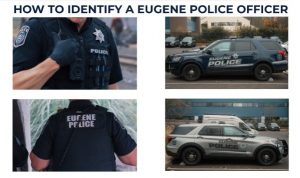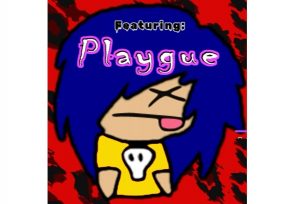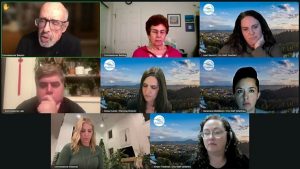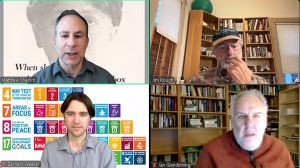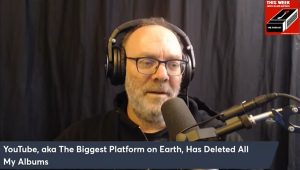Broken social scene: Responsibility and accountability cut both ways downtown
5 min read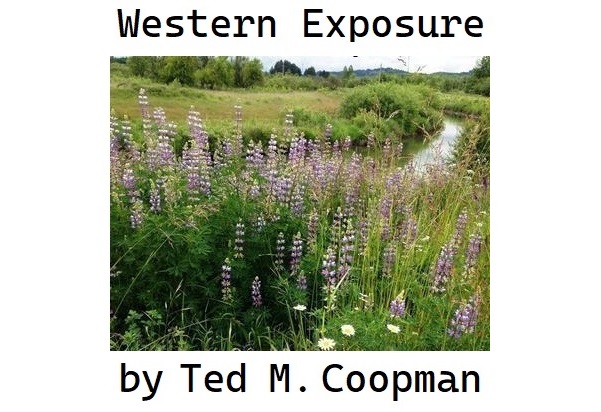
|
Getting your Trinity Audio player ready...
|
by Ted M. Coopman
Downtown Eugene’s perennial problems continue to undercut our culture and economy as well as corrode the social fabric. Ever since our historic downtown core was “redeveloped” in the 1970s via the destruction of 200+ historic buildings and installation of an ill-conceived pedestrian mall, it has been a long downhill slide.
Improvements have been made on 5th Avenue, the University District, and the new Riverfront neighborhood, but the core languishes. Mayor Knudson has rolled out ambitious plans for hundreds of new housing units on our acres of often-empty surface parking lots, but developers are uninterested. We need a better downtown environment that will attract visitors and investment.
While residents of central Eugene, a hardy urban living group, rarely break stride weaving around drug-addled homeless, trash, and empty graffitied storefronts on the way to the many downtown amenities such as Saturday Market, Lane County Farmers Market, the Hult Center, the Jazz Station, Oregon Contemporary Theatre, the Shedd, or dinner out, many more stay away.
One reason we moved to Jefferson Westside was so we could walk and ride everywhere, including to entertainment venues; I am downtown multiple times every week. I also know several downtown business owners. While it is easy to blame the “element” for making downtown unattractive, there is plenty of blame to go around.
Redevelopment worked as intended, making a few people a lot of money. The focus on easy profits by a few property owners makes downtown a challenge for businesses and visitors alike.
In the public dis-interest
Empty storefronts and vacant buildings are not due to lack of tenant interest. Instead, the vacancy rate is due to leases that price out many prospective entrepreneurs. If a lack of tenants meant a financial loss, these spaces would be occupied or sold. But the truth is, there are ways a vacant building can still produce profit.
If a property remains “available” for rent, it qualifies for depreciation deductions, regardless of whether it’s occupied. Property can also serve as collateral for loans, and partially occupied buildings with vacant units can generate sufficient profit.
Oregon’s severally broken property tax system, with artificially low commercial tax rates, certainly doesn’t help. While a vacant storefront can serve an owner’s personal interests, it is a drag on nearby properties and businesses, makes downtown unfriendly, and serves as a magnet for problem activity.
To change incentives and put responsibility for the negative impacts on these landlords, Eugene should impose a vacancy impact fee on any vacant downtown property after it has been unoccupied for six months and is habitable. Such a fee should set high enough to encourage quick action (perhaps 10% of advertised rent), escalate at a predetermined rate (10% monthly or quarterly) and be dedicated to the considerable public safety and sidewalk maintenance expenses downtown. As penalties go up, advertised rents will go down or properties will get sold.
For example, when Symantec moved into the building on the northeast corner of West Broadway and Charnelton, the company removed the West Broadway-facing access. Now Symantec is gone, and Eugene Public Works occupies the upper floors, but the ground floor is vacant. This barren stretch of West Broadway across from Oregon Contemporary Theatre is a magnet for camping and problem activities.
It also creates a dead spot between West Eugene neighborhoods, businesses like Noisette, Havana Café, and Tokyo Tonkatsu, and the rest of downtown. Street-facing storefronts would activate that frontage and dissuade problematic use of that space. Public access retail or services on sidewalk frontage downtown should be a requirement.
Tag, you’re s—!
Graffiti-splashed storefronts and walls send a clear signal of disorder and danger to visitors. Graffiti left in place attracts more of the same and contributes to an air of permissiveness of other behaviors. Many towns and cities mandate timely graffiti removal. I am not taking about patchy, mismatched color, paint over jobs that scream “I am covering up graffiti!”
The city of Eugene should impose a 24-hour graffiti removal requirement. Contract with a single company that can handle downtown and charge property owners for the removal; use part of that Vacancy Impact Fee, or otherwise pool resources. Removing graffiti would go a long way to make downtown friendlier.
Then there are anti-social behaviors and camping. Smoking tobacco and cannabis downtown already are prohibited. Enforce those bans. If people cannot loiter with cigarettes and smoke cannabis, they will not stay, and their other anti-social behaviors will leave with them.
The biggest issues are camping and sleeping. Storefronts and alcoves are trashed nightly. Business owners and staff are confronted regularly by drug-addled campers, trash, and human waste when trying to open in the morning.
Vacant buildings have no one who can trespass them off, as we saw at that mess at the short-lived Chicken Shanty next to Party Downtown. Business owners and staff are so regularly threatened with violence it often goes unreported.
Zone defense
Homelessness, mental health, and drug addiction are serious social problems that need more resources. However, compassion is not a suicide pact. Businesses and employees pay taxes and create the economic activity needed to pay for social services.
For the sake of downtown as well as residents and businesses all over Eugene, the City Council should place a 100-foot buffer around all structures where camping, sleeping, and storing personal items are prohibited. Violators would be trespassed off without the intervention of property-owners. This is “objectively reasonable” in the legal sense because the costs and dangers to property owners, residents, employees, and city staff are significant.
For downtown, combined with motivating owners of vacant storefronts, it would be a game-changer. Everyone has the right to be on public streets and share public space. No one has a right to privatize public space via anti-social behavior or camping that excludes everyone else.
Current strategies to make downtown safe and inviting are expensive and while we have seen improvements, these efforts are an ongoing expense and are managing instead of solving the problem.
Eugene can’t afford to surrender this public space to indifferent landlords and bad behaviors. We have the tools to make serious improvements. We just need the political will to use them.
Western Exposure is a semi-regular column that looks at issues and challenges from a West Eugene perspective – a perspective that is often ignored or trivialized by city leadership and influential groups and individuals largely based in south and east Eugene.
Western Exposure rejects the fauxgressive party line, performative politics, and “unicorn ranching” policy in favor of pragmatism focused on the daily experiences of residents and small businesses in Eugene—and West Eugene in particular.
Ted M. Coopman has been involved in neighborhood issues since 2016 as an elected board member, and now chair, of Jefferson Westside Neighbors and has 30+ years experience as an activist and community organizer. In a 2025 national competition, JWN’s neighborhood e-newsletters were awarded first place and its print newsletter awarded third place.
He earned a Ph.D. in Communication (University of Washington) and served on the faculty at San Jose State University from 2007 to 2020. Ted’s research on social movements, activist use of technology, media law and policy, and online pedagogy has been published and presented internationally and he taught classes ranging from research methodology to global media systems.
He and his spouse live in Jefferson Westside with an energetic coltriever and some very demanding and prolific fruit trees.
